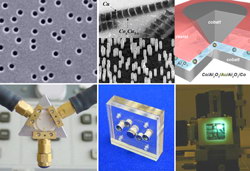Systems engineering on the single-molecule scale
Nanosized objects are those on the scale of single atoms or molecules. Due to their very high surface areas relative to their volumes, they have unique properties not present in bulk materials of the same substance. Nanotechnology is a field concerned with engineering functional systems on the nanoscale based on the above special properties of really small objects. Of course, before this is done, scientists must understand the structure and function of nanomaterials to facilitate designs benefiting from specific features. European researchers seeking to explore a wide range of potential nano-systems initiated the Nanotemplates project. They ‘grew’ nanotemplates (patterned nanostructures) within track-etched substrates including wafer, glass and metal for the production of metallic and composite arrays in single- or multi-layer geometry as well as polymeric light-emitting nano-objects. Adaptation of atomic force microscopy (AFM) enabled formation of nanotemplates with pore sizes of ultra-small dimensions (a few nanometres, nm, in diameter). The technique was used to make high-resistance nano-contacts on the scale of 1 nm. The AFM templates are well suited to probing quantum properties with potential application to quantum computing. Two optical device structures were investigated as were magnetoresistive effects in sensors for automotive positioning, where magnetoresistance refers to a change in electrical resistance in the presence of a magnetic field. Many nanowires-based microfluidic devices were also developed and tested, among them those related to molecular biology and genetics. Overall, Nanotemplates investigated and tested a wide range of nanotechnology-based devices developed from nanotemplates, or nano-patterned substrates. Testing helped focus future work for optimised commercial devices.







